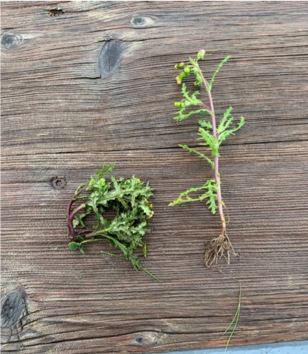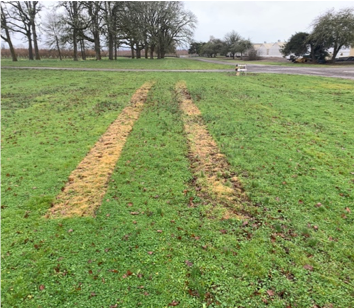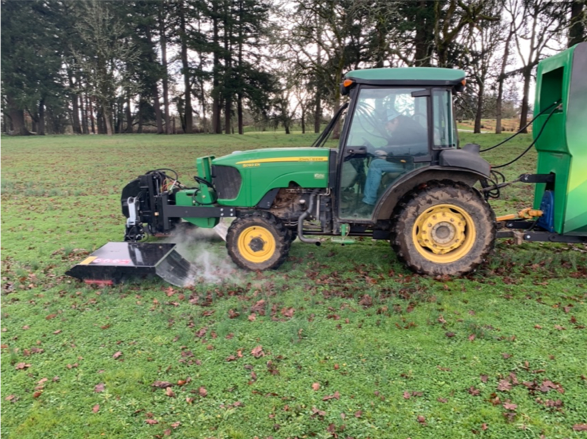From the Weeders of the West (WoW) blog ∴ March 11, 2021
Marcelo Moretti is a Professor in the Dept. of Horticulture at Oregon State University and an alumnus of UC Davis and California State University, Fresno.
***************
Managing Herbicide Resistance with Electric Weed Control
Herbicide resistance has also been a problem in tree nut crops for quite some time. In hazelnuts in Oregon, the most problematic herbicide-resistant weed is Italian ryegrass. Resistance is now confirmed to herbicides in groups 1, 2, 9, 10, 15, and 22. Resistance to more than one mode-of-action is often found in the populations. Non-chemical alternatives are needed. We recently started a project to evaluate electric weed control (EWC) funded by USDA – Crop Protection and Pest Management program.
Electric weed control (EWC) has been investigated for almost 40 years. However, it remains an emerging technology in the USA and elsewhere in the world. A few companies, mostly in Europe and Latin America, offer commercial EWC units. In Oregon, we initiated our work on EWC only this morning! Assembly details and small changes required a couple of weeks to resolve, but now we are ready to start EWC trials in Oregon for 2021. We are collaborating with Zasso (Indaiatuba, Brazil), working with an EH30 Thor unit (Figure 1).

How it works
The system generates a high voltage current that is applied directly to the plant via foliage contact with a metal bar. The voltage is conducted through the plant towards the roots. As high voltage passes through the plant, electrical resistance generates heat, leading to cell membrane rupture and plant death. Watch a short YouTube video of the process.
Power requirement
A PTO-driven generator produces electricity. A transformer increases the generator's voltage to 5,000-12,000 V. Tractor horsepower, and EWC unit configuration controls the voltage. The unit requires at least 75 hp power at the PTO, but I am inclined to say that you may want a bit more in wet soils with high clay content soil.

Acknowledgments
The USDA Crop Protection and Pest Management Program funds this work (award no. 2020-70006-32982). I would also like to acknowledge the Oregon Hazelnut Commission's support and the local growers who will participate in this project.
Original source: Weeders of the West (WoW) blog ∴ March 11, 2021
